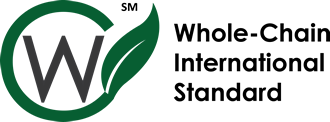
Author: Dr. Juan-Marcelo Gómez
Organizations must consistently pursue innovative strategies to enhance and adjust to guarantee success in the intricate and ever-changing business environment of the present day. The People, Process, Product, and Data (PPP+D) Framework is one of the most effective tools for achieving such objectives. This model, which was initially referred to as the People, Process, and Product (PPP), 3P’s, or Triad Model, is augmented to incorporate data as a binding element that enhances and integrates the three core components. Organizations can identify opportunities for improvement, streamline operations, and ultimately increase efficiency and effectiveness by analyzing people, processes, products, and data both individually and in conjunction. This essay offers a comprehensive examination of the PPP+D Framework, examining each of its components and their role in facilitating organizational advancement.
The Human Factor
The people component of the PPP+D Framework emphasizes the significance of human capital within an organization. The interactions, inspiration, and expertise of an organization’s employees—the cornerstone of any successful business—have a significant impact on its culture and growth potential. The people component addresses ensuring that employees are in the proper roles, have the necessary skills, and receive ongoing training and development. To guarantee that personnel are fully committed to the organization’s mission, it is essential to establish a positive work environment and foster effective communication.
Organizations that place a high priority on people development frequently observe significant improvements in employee engagement, loyalty, and performance. Establishing clear roles and responsibilities to promote accountability, encouraging open and collaborative communication, and establishing mentorship programs to facilitate skill development are actions that enhance the people aspect. For instance, organizations may implement reward systems that acknowledge employees’ contributions or team-based problem-solving initiatives to foster an environment in which individuals feel appreciated and motivated.
The Process Component
Organizational efficiency and effectiveness are contingent upon the refinement of processes, which serve as the foundation of any organization’s operations. Identifying and eliminating bottlenecks, streamlining workflows, and continuously improving operational procedures are all part of the process aspect of the PPP+D Framework. Organizations can enhance productivity, reduce costs, and improve consistency by automating repetitive tasks, implementing quality control measures, and creating standard operating procedures.
Providing employees with the requisite training and instructions to comprehend their roles within the broader operational structure is a critical component of effective process management. This guarantees that each team member is aware of their role in the process and the extent to which their efforts influence the organization’s overall success. Businesses can identify inefficiencies and take corrective action as necessary by consistently seeking feedback and monitoring key performance metrics.
For instance, an organization may establish standardized runsheets to guarantee operational uniformity or implement automation to minimize manual labour and minimize errors. By doing so, businesses can not only enhance service delivery and customer satisfaction, but also improve internal efficiency.
The Product Component
The PPP+D Framework’s product aspect emphasizes the goods and services that an organization provides. The products of a company are the primary point of contact with its customers, and as such, they must be continuously assessed and improved to accommodate changing needs and preferences. Conducting market research, analyzing customer feedback, and improving the quality and relevance of the product are all part of the product component.
Organizations can develop offerings that are in accordance with market demands by collecting insights from customers, which enables them to develop a more profound understanding of the desires of their target audience. Prototypes are developed and tested with users, and a product roadmap is established to guarantee that products meet customer expectations and remain competitive.
Companies that effectively manage the product aspect frequently employ an iterative approach, which involves the continuous development and refinement of their products in response to customer feedback and emerging trends. For instance, by establishing a feedback loop that enables customers to offer feedback on product features, it is possible to guarantee that products are developed in accordance with consumer demands, thereby promoting greater customer satisfaction and loyalty.
The Data Component
Data is essential for the connection of people, processes, and products in the context of Industry 4.0. The data component of the PPP+D Framework functions as a technological binder that guarantees informed decision-making, transparency, and accuracy. Maintaining trust and accountability within an organization necessitates data accuracy and immutability. Organizations can identify areas for improvement and make informed decisions that drive progress by utilizing data to monitor and evaluate each component of the framework.
For instance, in the food industry, blockchain technology can be employed to guarantee transparency and traceability throughout the supply chain. Businesses can optimize processes, monitor product quality, and make strategic decisions because of precise data collection. Data also assists in the assessment of employee performance and the verification that they are assigned the appropriate roles and receive the necessary training.
Advancements in technologies such as the Internet of Things (IoT), artificial intelligence (AI), and blockchain have enabled the utilization of data to enhance quality control, improve traceability, and increase efficiency. In addition to guaranteeing that products satisfy regulatory standards and customer requirements, the data component also enhances collaboration among individuals and processes.
People, Process, Product, and Data Synergy
The PPP+D Framework’s authentic effectiveness is derived from the synergy between its four components. Businesses can achieve significant and long-lasting success by aligning their people, processes, products, and data. Data is the bedrock that unites people, processes, and products, guaranteeing that each decision is well-informed, each process is optimized, and each product meets the highest standards.
PPP+D is a well-oiled machine capable of adapting to market changes and maximizing performance is the outcome when people are empowered and equipped to perform their roles effectively, processes are well-defined and optimized, products meet customer needs, and data is used to enhance decision-making. The interplay between these four components helps cultivate a results-oriented culture that promotes both employee satisfaction and customer loyalty, as well as innovation and creativity.
For organizations that are interested in enhancing their overall performance, the People, Process, Product, and Data (PPP+D) Framework offers a comprehensive approach. Businesses can establish a strong foundation for sustainable growth, develop targeted action plans, and identify areas for improvement by adopting a comprehensive perspective that includes people, processes, products, and data. The binding element that drives organizational progress is data, which ensures that the right people, efficient processes, high-quality products, and accurate data combine to create long-term success. Each component plays an essential role. Organizations that adopt the PPP+D Framework are well-positioned to adapt to change, meet customer expectations, and thrive in an increasingly competitive business environment.
